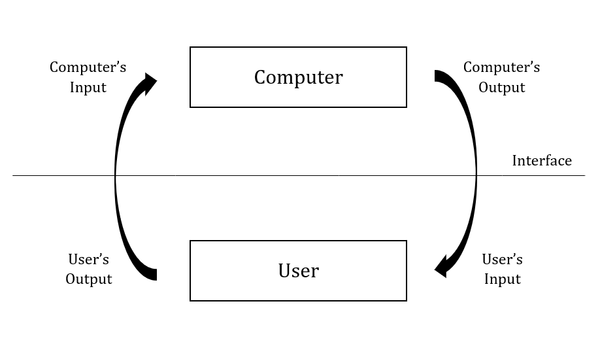人因工程

人因工程(粵拼:jan4 jan1 gung1 cing4;英文:ergonomics),粵文又有叫人機工程或者人體工學,係考慮人類因素(human factors)嚟設計產品同系統嘅一個工程學領域。
一位人因工程師會參考心理學同生理學等領域嘅知識,諗吓人類嘅認知能力同生理結構受乜嘢限制,跟住再諗呢啲限制會點影響一件產品或者一個系統嘅使用;然後佢就會按呢啲考量,改善產品同系統嘅設計[1][2]。
定位
[編輯]國際人因工程學會(International Ergonomics Association,IEA)係噉樣定義人因工程嘅[3]:
| 「 | 原版英文:"The word ergonomics - "the science of work" is derived from the Greek ergon (work) and nomos (laws). Ergonomics (or human factors) is the scientific discipline concerned with the understanding of interactions among humans and other elements of a system, and the profession that applies theory, principles, data, and methods to design in order to optimize human well-being and overall system performance."
粵文翻譯:「Ergonomics」呢個(英文)字-「工作嘅科學」噉解-嚟自希臘文嘅「ergon」(工作)同「nomos」(法則)。人因工程(或者人類因素)係嘗試了解人類同系統元件之間嘅互動嘅科學領域,以及運用理論、原則、數據同方法嚟設計(系統)務求將人類嘅福祉同整體系統表現最佳化嘅專業。 |
」 |
- 設計張書檯嗰陣,諗吓用張書檯嘅人嘅身高係點,張書檯會唔會高得滯,搞到個人坐姿唔好(生理考慮);
- 設計塊鍵盤嗰陣,諗吓塊鍵盤有幾斜,會唔會令個用家焗住要拗彎手腕,長遠對用家嘅手腕健康唔好(生理考慮);
- 設計個用嚟做航空交通控制嘅系統嗰陣,諗吓個系統傳資訊嘅率會唔會超越控制員嘅注意力極限同搞到控制員犯錯率上升(心理考慮)[6];
... 等等。
人因工程係一個理論同實踐並重嘅領域:一方面,人因工程師會嘗試建立用嚟描述人類同機械之間嘅互動嘅理論模型,途中用到多個理論領域嘅知識-包括認知科學領域(心理學同神經科學等)同自然科學(生理學同力學等),例子有用古典力學分析一個人使用一部機械嗰陣身體各部份會受幾多力,同埋呢啲力會唔會大到足以對嗰個人嘅身體造成傷害[7][8];另一方面,人因工程師又係一個實用嘅專業,成日會有人出錢請人因工程師幫手做產品或者系統嘅設計,例如有好多工廠都會請人因工程師度工作空間要點設計先可以令做嘢效率最大化[3]。
人機互動
[編輯]人機互動(human–computer interaction,HCI)可以話係人因工程嘅一個子領域[9],結合電腦科學同認知科學,研究用家同電腦之間嘅互動:例如人喺打機(用遊戲機呢樣電腦產品)嗰陣,好多時都會變到高度專注,而佢哋打機嗰時嘅專注程度會影響佢哋點樣撳掣,呢樣嘢又會影響部機跟住出乜嘢輸出-人機互動上嘅技術同研究重點正正就在於觀察呢啲互動,分析件產品嘅狀態同用家嘅心理狀態點樣一齊隨時間變化[10][11]。
人機互動嘅基本理論模型可以畫成下圖[12][13]:p. 3:

人機互動將用家同電腦想像成輸入(input)輸出(output)系統:
- 用家會以某啲方式向部電腦傳遞有關「佢想部電腦做乜」嘅訊號-用家嘅輸出(user's output),電腦嘅輸入(computer's input);廿一世紀初嘅電腦有好多架生用嚟俾用家向部電腦俾輸入(輸入架生)-包括咗鍵盤(感應用家撳咗邊個掣)、踎士(感應用家撳咗邊個掣同埋要隻踎士向邊個方向郁)、咪高峰(感應用家提供嘅聲)同埋輕觸式熒幕(感應用家隻手指篤緊邊個位)呀噉,呢啲架生能夠話俾部電腦知用家想佢做啲乜,然後部電腦會按自己內部嘅演算法(algorithm)對呢啲輸入做各種嘅運算[14][15]。
- 部電腦做完運算之後[註 1],就會以某啲方式向用家傳遞運算結果-電腦嘅輸出(computer's output),用家嘅輸入(user's input);廿一世紀初嘅電腦基本上實會有熒光幕(將運算結果以圖像嘅形式表示出嚟)同埋喇叭(將運算結果以聲表示出嚟),呢啲架生(輸出架生)會向用家傳達資訊[16][17],而用家內部嘅認知過程會對呢啲資訊作出處理,最後用家就會俾出「決定撳呢個呢個掣」或者「決定用手指篤輕觸式熒幕嘅呢一忽」等嘅輸出。
相關知識
[編輯]註釋
[編輯]- ↑ 到咗廿一世紀初,呢啲運算嘅速度經已快到人用肉眼睇覺得好似係一瞬間發生嘅噉。
睇埋
[編輯]文獻
[編輯]- Berlin, C., & Adams, C. (2017). Production ergonomics: Designing work systems to support optimal human performance. Ubiquity Press. DOI: https://doi.org/10.5334/bbe.
- Bridger, R. (2008). Introduction to ergonomics. Crc Press.
- Warm, J. S., Parasuraman, R., & Matthews, G. (2008). Vigilance requires hard mental work and is stressful (PDF). Human factors, 50(3), 433-441.
攷
[編輯]- ↑ Bridger, R. (2008). Introduction to ergonomics. Crc Press.
- ↑ ISO 6385 defines "ergonomics" and the "study of human factors" similarly, as the "scientific discipline concerned with the understanding of interactions among humans and other elements of a system, and the profession that applies theory, principles and methods to design to optimize overall human performance."
- ↑ 3.0 3.1 International Ergonomics Association. What is Ergonomics? 互聯網檔案館嘅歸檔,歸檔日期2020年5月3號,.. Website. 2020 May.
- ↑ Examples of Ergonomics 互聯網檔案館嘅歸檔,歸檔日期2019年11月30號,.. Ergonomics-Info.com.
- ↑ Wilson, J. R. (2000). Fundamentals of ergonomics in theory and practice. Applied ergonomics, 31(6), 557-567.
- ↑ Endsley, M. R., & Rodgers, M. D. (1996, October). Attention distribution and situation awareness in air traffic control. In Proceedings of the human factors and ergonomics society annual meeting (Vol. 40, No. 2, pp. 82-85). Sage CA: Los Angeles, CA: SAGE Publications.
- ↑ Schiele, A., & Van Der Helm, F. C. (2006). Kinematic design to improve ergonomics in human machine interaction. IEEE Transactions on neural systems and rehabilitation engineering, 14(4), 456-469.
- ↑ Riley, V. (1989, October). A general model of mixed-initiative human-machine systems. In Proceedings of the Human Factors Society Annual Meeting (Vol. 33, No. 2, pp. 124-128). Sage CA: Los Angeles, CA: SAGE Publications.
- ↑ Boring, R. L. (2002, September). Human-computer interaction as cognitive science. In Proceedings of the Human Factors and Ergonomics Society Annual Meeting (Vol. 46, No. 21, pp. 1767-1771). Sage CA: Los Angeles, CA: SAGE Publications.
- ↑ Sliwinski, J. (2019). Mindfulness and HCI. In Handbook of Research on Human-Computer Interfaces and New Modes of Interactivity (pp. 314-332). IGI Global.
- ↑ Dittmar, A. (2019). Where do We See Cognitive Ergonomics in the Near Future? (PDF). In ReCogErg@ ECCC (pp. 5-11).
- ↑ The basic model for human-computer interaction.
- ↑ Fischer, G. (2001). User modeling in human–computer interaction (PDF). User modeling and user-adapted interaction, 11(1), 65-86.
- ↑ Lin, C. J., Liu, C. N., Chao, C. J., & Chen, H. J. (2010). The performance of computer input devices in a vibration environment 互聯網檔案館嘅歸檔,歸檔日期2021年3月11號,. (PDF). Ergonomics, 53(4), 478-490.
- ↑ Alonso, R., Causse, M., Vachon, F., Parise, R., Dehais, F., & Terrier, P. (2013). Evaluation of head-free eye tracking as an input device for air traffic control 互聯網檔案館嘅歸檔,歸檔日期2021年3月11號,. (PDF). Ergonomics, 56(2), 246-255.
- ↑ Computer Basics: What Is an Output Device? 10 Examples.
- ↑ Fischer, G., Nakakoji, K., Ostwald, J., Stahl, G., & Sumner, T. (1993). Embedding critics in design environments. The knowledge engineering review, 8(4), 285-307.
拎
[編輯]- Directory of Design Support Methods Directory of Design Support Methods.
- Engineering Data Compendium of Human Perception and Performance.
- Index of Non-Government Standards on Human Engineering...
- Index of Government Standards on Human Engineering...
- Human Factors Engineering resources.
- Human Factors in aviation.
- NIOSH Topic Page on Ergonomics and Musculoskeletal Disorders.
- Office Ergonomics Information from European Agency for Safety and Health at Work.
- Human Factors and Ergonomics Resources.
- HSI Tools Catalog.


